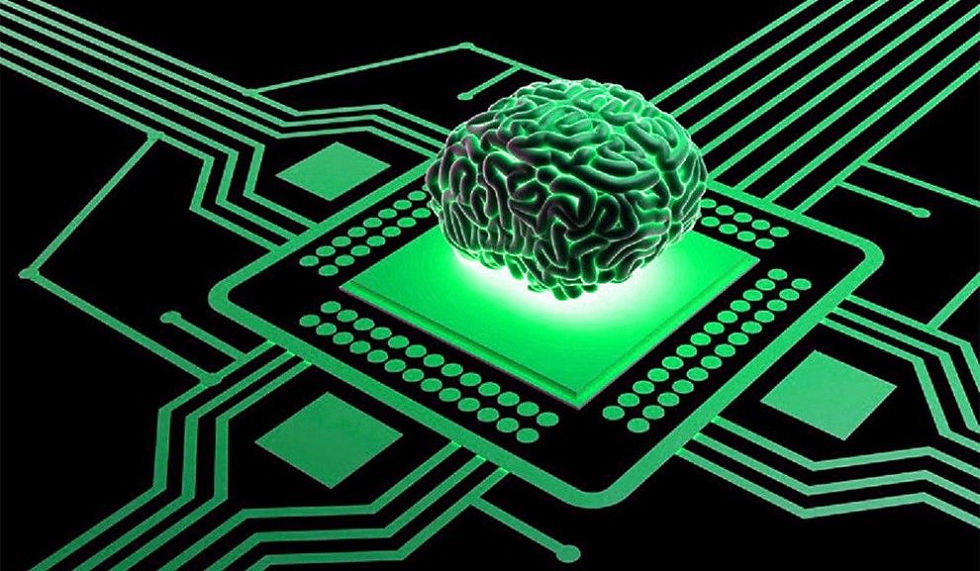‘Brain-On-A-Chip’ Designed to Bring Super-computing to Mobile Devices
- Roshan thomas
- Jul 12, 2020
- 3 min read
Updated: Jan 27

The goal of MIT to serve knowledge, and educate students in science, #technology, and other areas of scholarship that would best serve the nation and the world in the 21st century.
MIT is committed to generating, disseminating, and preserve knowledge, and to work with others to bring this knowledge to bear on the world’s great challenges and such challenge is done once again by the research and development team of MIT by designing a chip that consists of thousands of tiny memristors (memory transistors) which is silicon-based that mimic the human brain. The chip when runs various tasks has the ability to "remember" and reproduce stored images. The chip is inspired by the human brain and is tried to be as advance as it is.
The chip which is designed of thousands of #memristors is made of alloys of silver and copper, along with silicon so that this design is apt for (neuromorphic devices) i.e. the electronics that are based on a type of circuit that processes information in a similar way as the brain’s neural architecture. This neural design inspired #circuits like this could be built into small, portable devices, and can carry out complex computational tasks performed by supercomputers.
The term memristors or memory transistors are used as an essential element in neuromorphic computing. In a neuromorphic device, a memristor would serve as the transistor in a circuit, though its workings would more closely resemble a brain synapse — the junction between two neurons. The synapse receives 3signals from one neuron, in the form of ions, and sends a corresponding signal to the next neuron. The memristor can work along a gradient, almost like a synapse of the brain. The signal that it produces would vary depending on the strength of the signal it receives. This enables a single memristor to have many values, and therefore carry out a far wider range of operations than binary #transistors.

As now the memristors can remember it enables us to answer a complex equation or the visual classification of an object that is reliable — a feat that normally involves multiple transistors and #capacitors. Jeehwan Kim of MIT says that "the existing memristor designs work pretty well in cases where voltage stimulates a large conduction channel or heavy flow of ions from one electrode to the other. But these designs are less reliable when memristors need to generate subtler signals, via thinner conduction channels", The thinner a conduction channel, and the lighter the flow of ions from one electrode to the other, the harder it is for individual ions to stay together. Instead, they tend to wander from the group, disbanding within the medium. As a result, it’s difficult for the receiving electrode to reliably capture the same number of ions, and therefore transmit the same signal, when stimulated with a certain low range of #current.
To fix this loophole they conducted their first test, in which the #engineers recreated a gray-scale image of Captain America's shield, each pixel matched to a corresponding memristor on the chip that was able to produce the same crisp image of the shield many times.
As Kim said "We're using artificial synapses to do real inference tests, We would like to develop this technology further to have larger-scale arrays to do image recognition tasks. And someday, you might be able to carry around artificial brains to do these kinds of tasks, without connecting to supercomputers, the internet, or the cloud."
SEE ALSO:
Order Electronics Projects
Want us to guide you through your project or make the project for you? Click on the button below or reach out to us via Call/WhatsApp at (+91) - 7600948607
You can -
Order Basic Electronics Projects
Order Embedded Systems Projects
Order IoT Projects
Order FPGA Projects
Order VLSI Projects
Order Image Processing Projects
Order Matlab Projects
Order TinkerCAD Projects
Order Proteus Projects
Click on the button below to fill out the project inquiry form -
Create Various Projects
Check out our Free Arduino Projects Playlist - Arduino Projects
Check out our Free Raspberry Pi Projects Playlist - Raspberry Pi Projects
Check out our Free TinkerCAD Projects Playlist - TinkerCAD Projects
Check out our Free IoT Projects Playlist - IoT Projects
Check out our Free Home Automation Projects Playlist - Home Automation Projects
Check out our Free NodeMCu Projects Playlist - NodeMCu Projects
Follow us -
Please do follow us i.e. #learnelectronicsindia to get daily updates about new blogs, videos, courses, products, offers, competitions, quizzes, and Internship Opportunities.






Wow, what an incredible blog! I never knew that a 'Brain-On-A-Chip' concept could bring super-computing power to mobile devices. Learn Electronics India has done a fantastic job of explaining this cutting-edge technology in a simple and informative manner. This article has opened my eyes to the future possibilities of mobile computing. Kudos to the author for such an insightful piece.
LearnElectronics India simplifies complex concepts beautifully. Thank you!